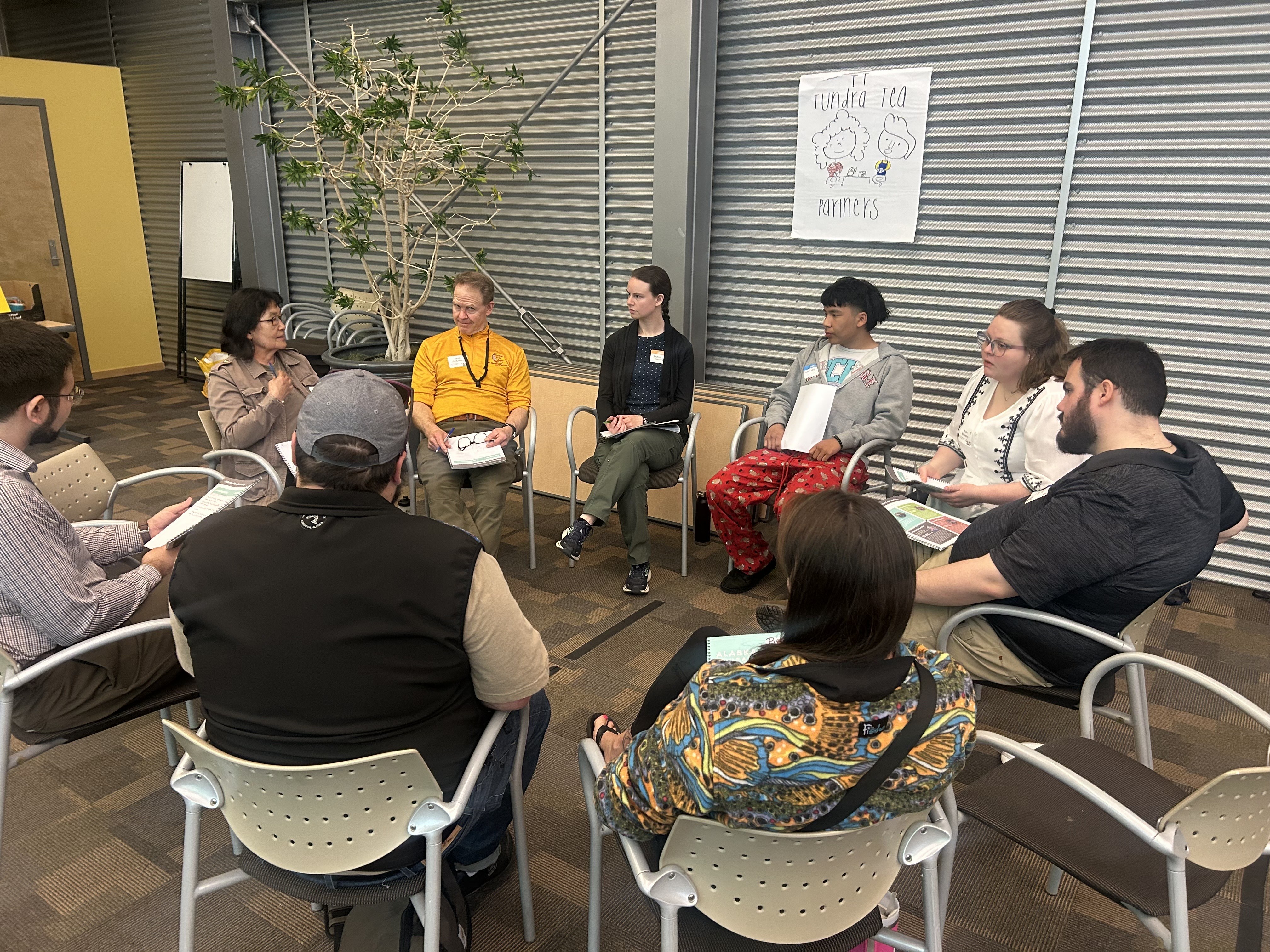
Teachers listen to a high school student share their Alaska Studies class experience. Marie Acemah / See Stories
Amanda Dale • June 6, 2025

Teachers listen to a high school student share their Alaska Studies class experience. Marie Acemah / See Stories
The Forum hosted its first-ever Alaska Studies Educator Summit on May 29-30 in Anchorage. The gathering was planned over several months with support from a statewide Community Advisory Board and partner See Stories. In this post, we talk with the Summit design team to pull back the curtain on one of the central design elements, and how we utilized it to center student voices and build trust.
Alaska Studies is a tough class to teach. Teachers have to fit a long and complex history into one semester, there’s no statewide curriculum, some topics are really hard to discuss, and compounding everything, Alaska Studies is often assigned to newer teachers from out of state. Teachers statewide have expressed their frustrations to the Forum for the past several years, so when an opportunity to design and host an Alaska Studies summit arose through Senator Murkowski’s office in early 2024, staff jumped at the chance to help.
“I heard time and time again that Alaska Studies teachers are frustrated and have been for a long time,” said AKHF’s Director of Conversation Programs Taylor Strelevitz. “They feel like there hasn’t been any meaningful momentum to improve the course.” For a Summit to work, participants would need to be able to talk openly about their frustrations, but not be stymied by them. “When things are so fraught, you have to sit down and talk about it,” said Taylor. “It’s the only way you can really start to move forward together. But then we had this big question of, how do you make that conversation feel good and worthwhile?”
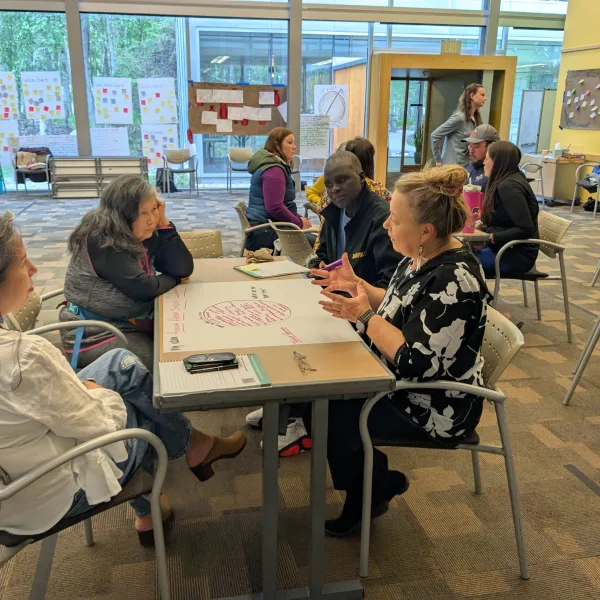
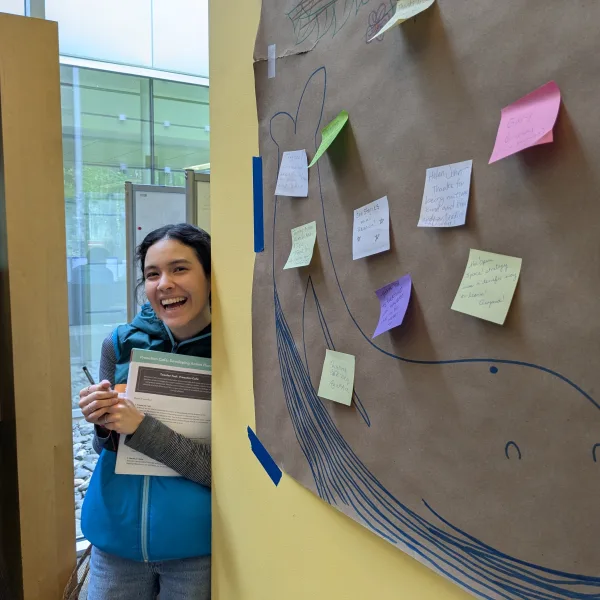
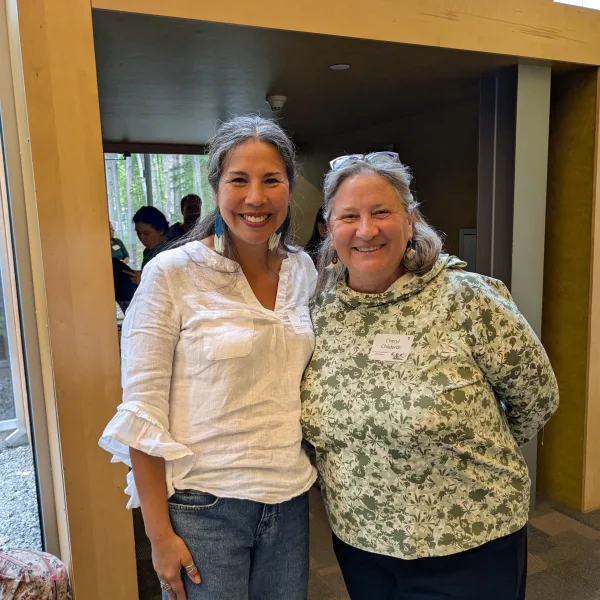
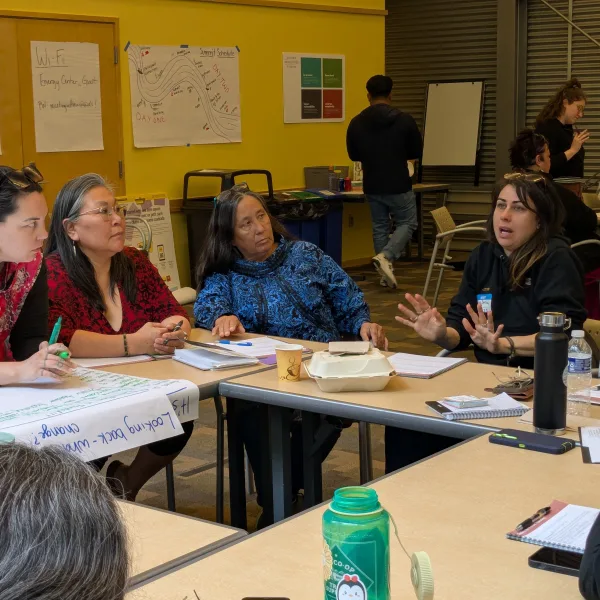
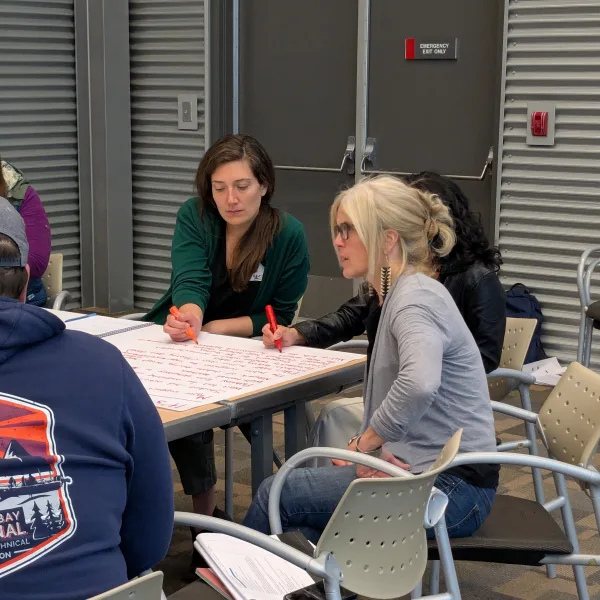
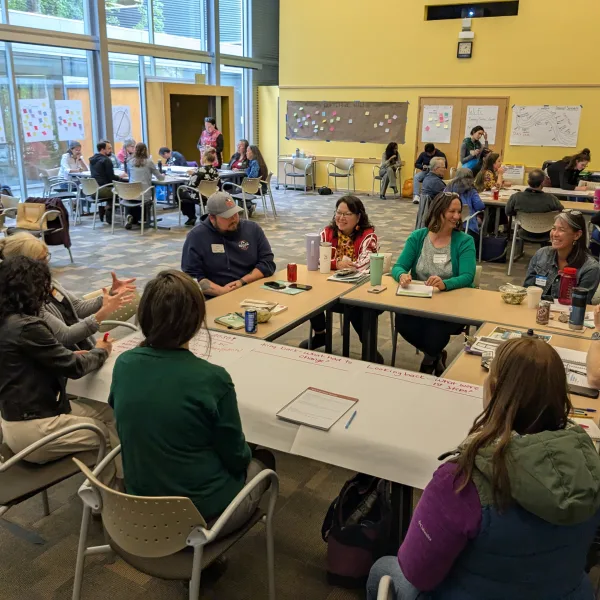
Making a Summit valuable for participants
There are many ways the Forum designed for a constructive Summit, including a solid hour at the start of Day 1 to intentionally welcome participants and get everyone’s voice in the room early on; a grounding from Dr. Panigkaq Agatha John-Shields that had the whole room dancing and laughing; and a lot of pre-work by head Summit planner Molissa Udevitz, AKHF’s Programs Design Manager, including individual Zoom interviews with everyone coming to the Summit. “Molissa did a ton of work with people before they even got to the room to make sure each person felt like, I have a reason to be here and I understand what I’m committing to,” said Taylor. “There was a feeling of, ‘Hey, we’re all going to be figuring this out together.’”
The Summit design team, led by the Forum and supported by See Stories, knew that a key way to keep participants engaged and focused on what’s possible was to build in student voices from early on. “We hear so many conversations about how youth are important, but often we don’t walk the talk,” said AKHF VP of Programs Polly Carr. The team looked for an activity that would lay the foundation for centering the people closest to the topic - youth taking the Alaska Studies class.
“We talked about doing a panel or a fishbowl, for example,” said Molissa. “But we wanted to have a way that would feel genuine, give them time and space to share, and put students less on the spot.”
Taylor, whose job at the Forum includes researching ways to bring people together for different types of gatherings, knew immediately that they wanted to use an activity created by the Art of Hosting called Collective Story Harvesting. “We wanted to do it at the beginning because it’s so good at giving people a sense of purpose from the start,” they said. “It’s a process everyone has a place in. It gives you a role, so if you’re nervous about being in a large group, or worried about what you can bring to the group - it gives you a reason to be there, and a way to show up fully.” Summit partner See Stories, an organization committed to uplifting youth voices, was excited to find and work with five students and recent graduates who could share their personal experiences with their own Alaska Studies classes. “I really want to make sure See Stories and Marie [Acemah] get a special shout-out,” said Molissa. “Marie met with every student, had them type up their stories and practice… it’s so much work to get youth to tell their stories! It’s a lot of follow-up.”

Collective Story Harvesting
For Collective Story Harvesting, participants broke into groups of eight teachers, one youth storyteller, and one Forum staff facilitator. The activity is simple and easy to adapt to a classroom setting. First, the storyteller shares their experience while each listener takes notes on what stands out to them, and on a theme they’ve been randomly assigned (like Relationships or Challenges). After the storyteller finishes, each listener shares some of their reflections on the story, and at the end, the storyteller shares any insights they’ve gained back to the small group.
“In a lot of storytelling practices, the focus is on the teller giving their experience,” said Taylor. “But in Collective Story Harvesting it’s not a performance. It’s meant to be an exchange - of gifts, of experiences, of wisdom. The best part is at the end, people connect across the story groups and then you have all these lived experiences that your peers, as people who deeply listened to the stories, are finding connections between. And those commonalities and takeaways are even stronger because they are done with new eyes and ears.”
Collective Story Harvesting also honors the storyteller. “There’s something so strong about having your story reflected back to you - what a powerful way to make meaning out of your experience,” said Taylor. As one student storyteller, a junior at Bartlett High School, reflected, “I didn’t know I was going to leave here with so many aunties and uncles… my whole group knows each other for real now.”
The Alaska Studies class experiences the students shared ranged from the positive - impactful class projects that illustrated how change happens, strong relationships with teachers who strove to make safe and comfortable learning spaces, gaining deeper understandings of their own cultures and heritages - to the painful, like classes that were entirely made up of worksheets, or where classmates made racist or ignorant jokes that went unchecked.
“It’s so rare for teachers to have to sit and listen to kids,” said Taylor. See Stories’ Marie Acemah was struck when she looked around the room: “It was a powerful visual, seeing these groups of adults gathered around students, listening closely.”
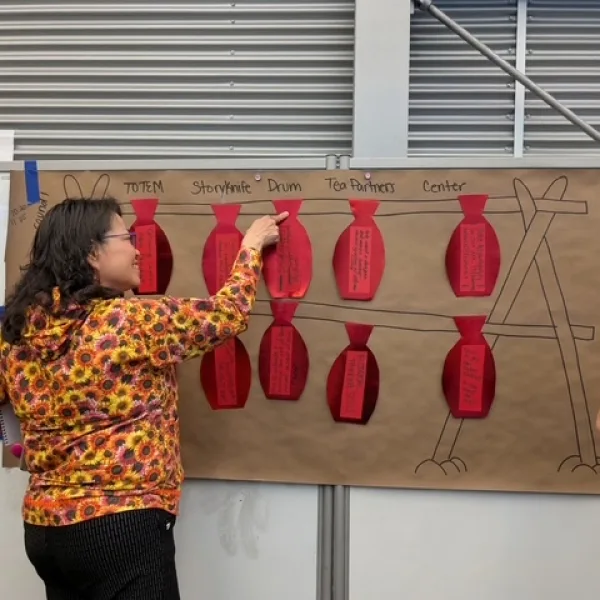
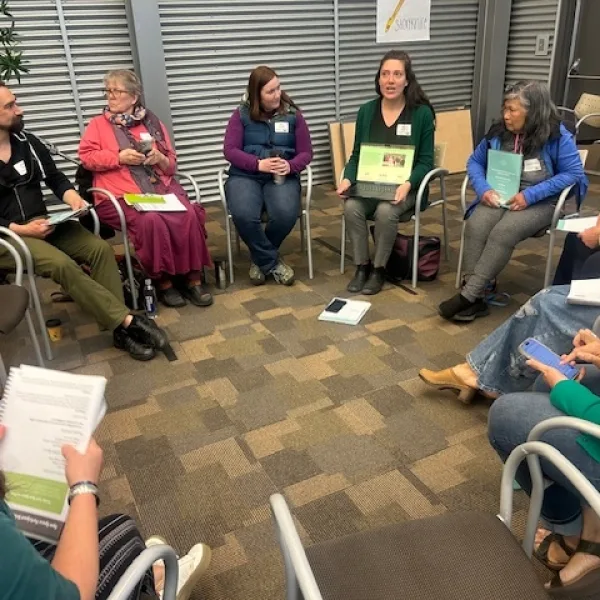
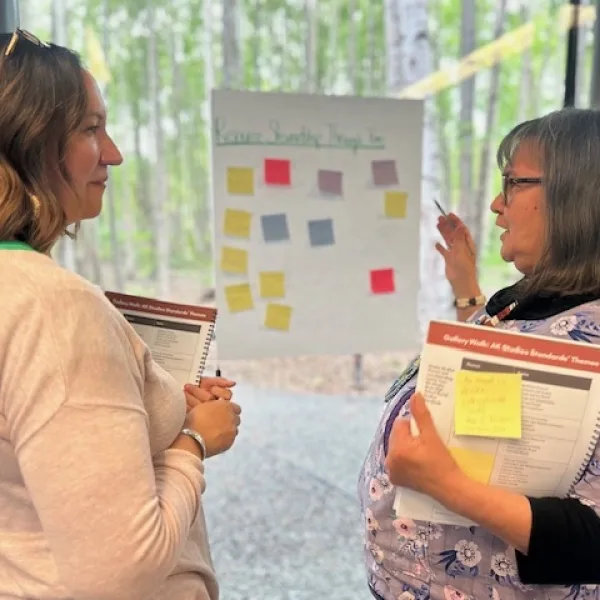
Building trust to get to work
For the Summit to be successful, participants had to co-create a trusting and open space. Knowing that students had trusted the Summit designers enough to share personal stories bought the design team and the Summit early credibility, and gave a sense that the time together was going to be special. “I heard someone say, ‘I’ve never heard from a student about their actual experience in this class’ and that just immediately brought this feeling of urgency,” said Taylor.
The Collective Story Harvesting prompts were designed to get the group thinking about the values students shared in their stories, and so when the entire group debriefed after the small group discussions, all of the participants were able to talk through and ground in the same set of values. “Having a shared understanding of what our kids want allowed us to do other Summit activities that required trust and connection beyond what a large group might have typically had so early on,” said Taylor. One example was Open Space, an activity where participants bring their own questions and challenges to the group in small hosted tables. In groups with high trust, typically many people will volunteer to be brave and take on the host role. At the Summit, all available tables were taken by participants who named challenges from talking about colonization and historical trauma to engaging new-to-Alaska students to effectively lobbying for more resources for teachers at the state level.
“One thing I loved about this Summit is that we were never teaching, or saying ‘here’s how Alaska Studies could be better,’” said Taylor. “All of the ideas were theirs.”
The value of design
People who have taken Forum facilitation and design workshops will likely remember hearing author Priya Parker’s assertion that up to 90% of what makes a gathering successful is the pre-work of thoughtful design and planning. “This was a wonderful group,” said Taylor, “and we also designed this Summit well, so that we knew it could be constructive. You can’t go negative when you’re listening to a student talk about their own experience, or when a peer is sharing their own curriculum they’ve had success with, or when you’re talking about your hopes for the future. None of those questions lend themselves to complaining.”
Grounding in trust, shared values, and personal experiences ended up being exactly what this group of educators needed. As one teacher shared at the end of Day 2, “I was so burned out, I was ready to quit my job. And this Summit turned everything around for me.”
Thank you to:
AKHF designers & facilitators:
- Programs Design Manager Molissa Udevitz, Director of Conversation Programs Taylor Strelevitz, Director of C3 Programs Julie Rowland, Director of Grants and Stories Programs Shoshi Bieler, VP of Programs Polly Carr, and President & CEO Kameron Perez-Verdia.
See Stories:
- Marie Acemah & Megan McBride
Alaska Council for Social Studies.
Special thanks to See Stories youth filmmaker Brandon Lopez, Dr. Panigkaq Agatha John-Shields, and AKHF’s Story Works Lead Teaching Fellow Katherine Paredes!
The Alaska Humanities Forum is a non-profit, non-partisan organization that designs and facilitates experiences to bridge distance and difference – programming that shares and preserves the stories of people and places across our vast state, and explores what it means to be Alaskan.
November 13, 2025 • MoHagani Magnetek & Polly Carr
November 12, 2025 • Becky Strub
November 10, 2025 • Jim LaBelle, Sr. & Amanda Dale